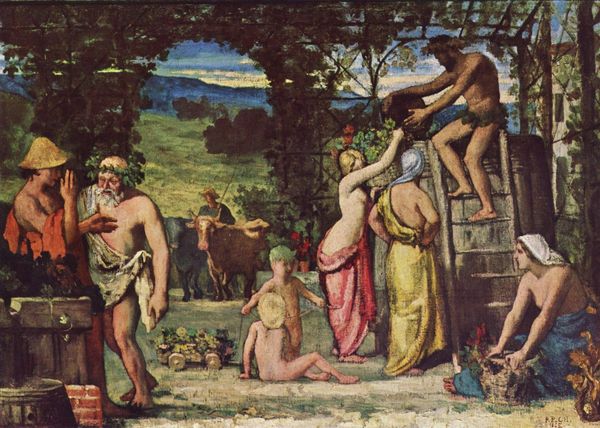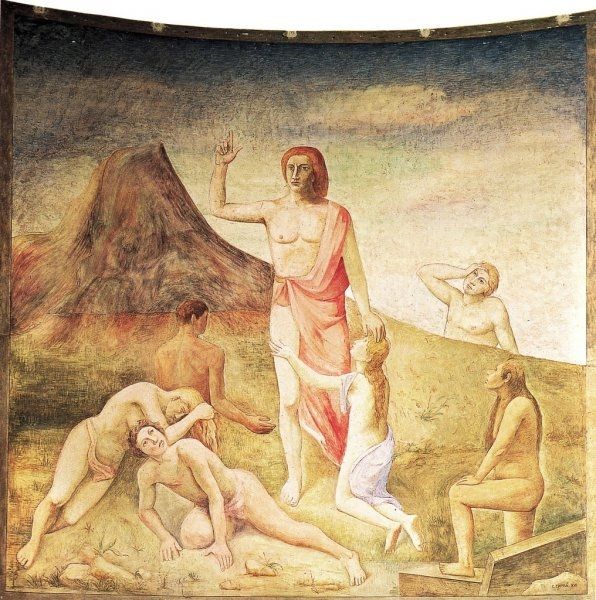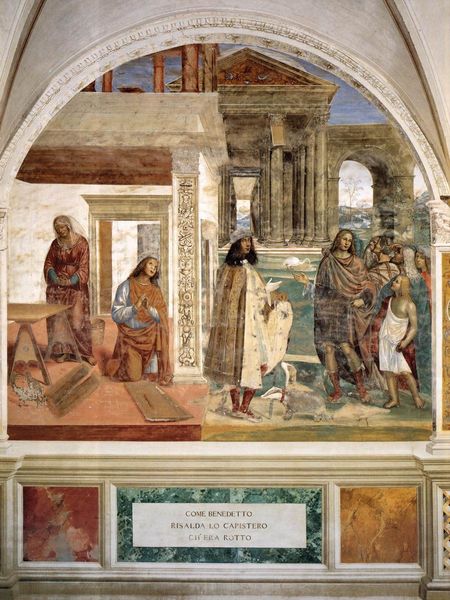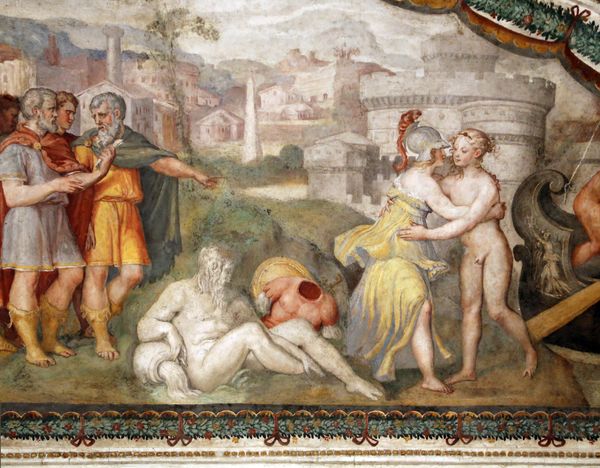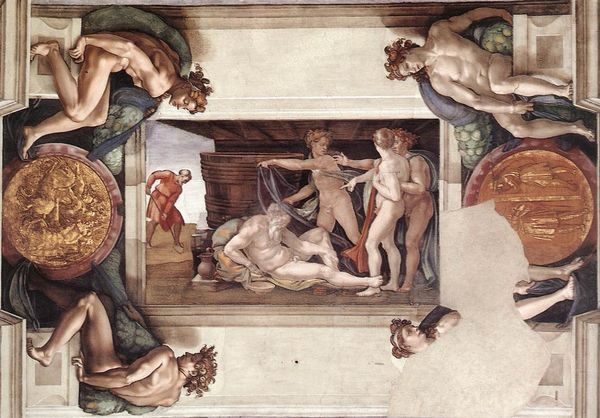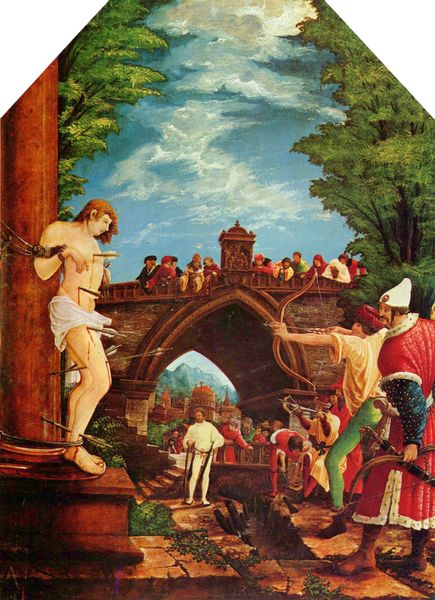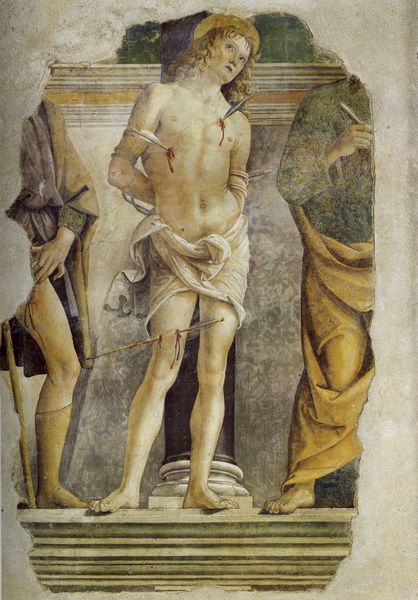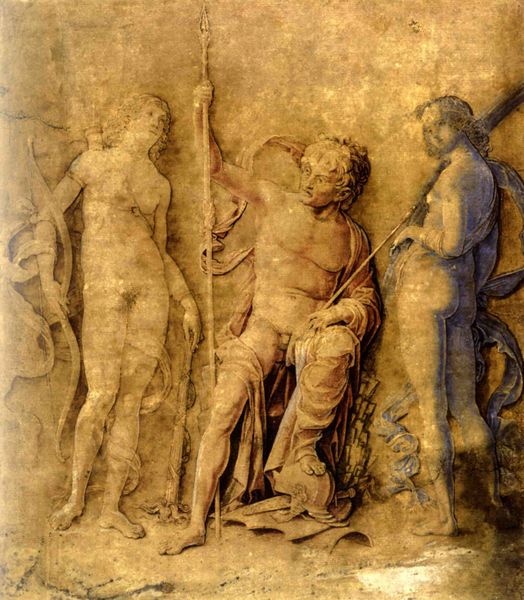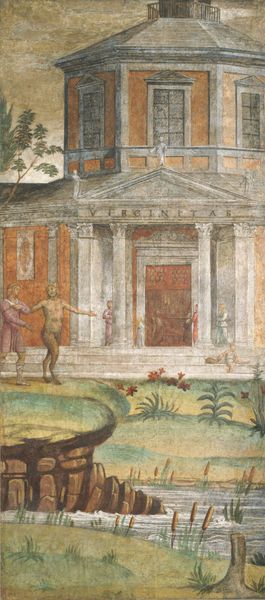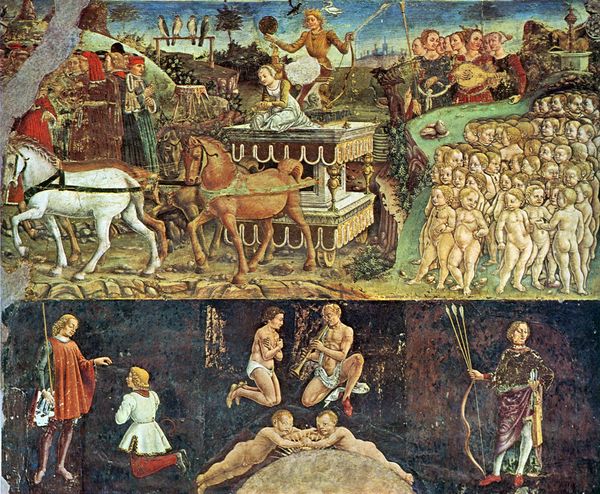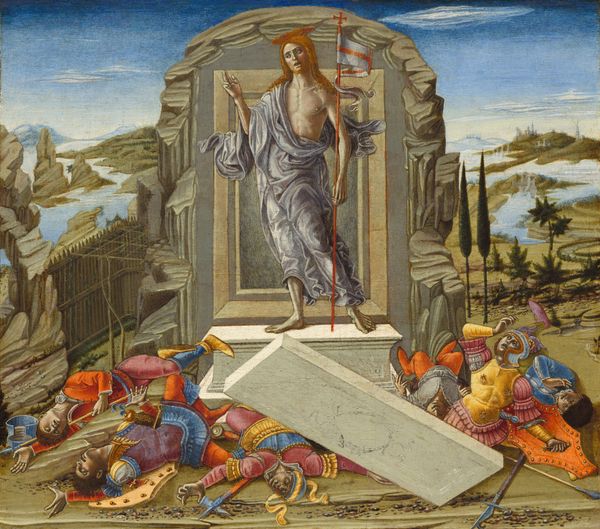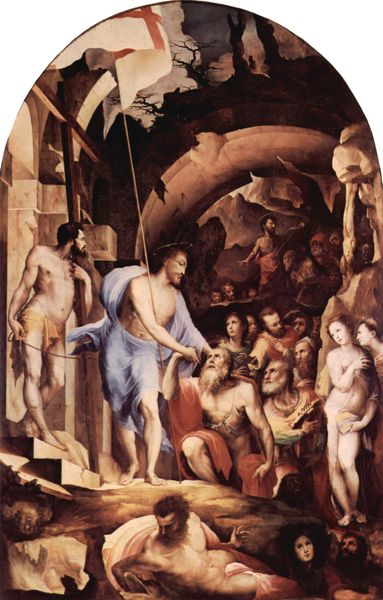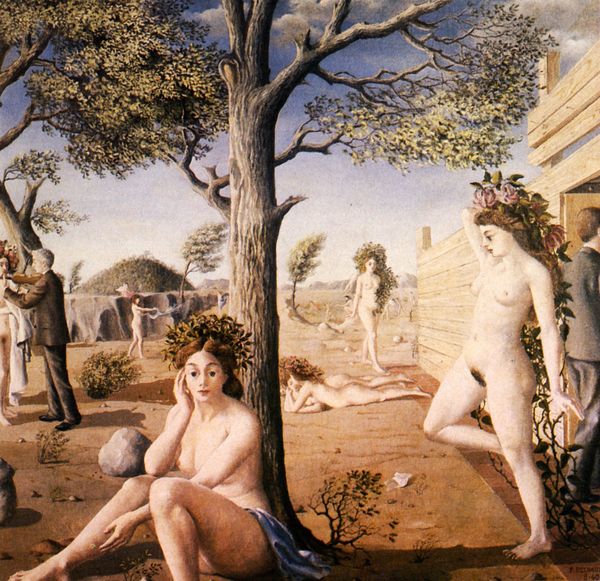
painting, oil-paint
#
portrait
#
allegory
#
narrative-art
#
painting
#
oil-paint
#
classical-realism
#
figuration
#
oil painting
#
mythology
#
history-painting
#
academic-art
#
italian-renaissance
#
watercolor
Copyright: Carlo Carra,Fair Use
Curator: Carlo Carra created this oil painting, entitled "Giustiniano libera lo schiavo", or "Justinian frees the slave" in 1938. It’s a narrative scene rendered in a style that recalls classical realism. What strikes you initially? Editor: The palette feels quite muted, almost like a faded fresco. And there's a strange formality despite the nudity, an allegorical tableau vivant set against an idealized Italian landscape. Curator: Indeed. Carra, who was associated with the Metaphysical art movement before joining the Fascist political movement, looked to historical models to comment on his present, but also for artistic direction, which is particularly visible here. Justinian I, the Byzantine emperor, who’s stepping on a helmet to symbolise conquest over tyranny, offering legal emancipation. But whom is it for, really? Editor: It is interesting to think about, because while we’re looking at what appears to be liberation, there’s also a strong sense of imposition, maybe through the emperor's performative act of ‘liberation’, on one hand. But the lack of depth also makes me consider ideas on agency; those on the right feel stiff, almost petrified in their subservient roles, whereas the family in brown seems almost like they’re about to take an important journey. Curator: Carra frequently looked at history, mythology, and religion. In this particular piece he has fused classicism with notions of the political body and its citizens. The architecture in the backdrop reminds us of Italian city squares – almost propagandist, but quite barren in the presentation of subjectivities here. The enslaved have no option but to accept such gesture of liberty. This piece can then be examined using Agamben's State of Exception and what Foucault identifies as technologies of power. Editor: I think this reading brings new layers to what at first appeared as merely another classicized mythological painting! The social and historical contexts do offer some sharp irony on its subject, though there may also be a reading that sees the family leaving town with all their belongings seeking asylum, whereas others remain with very limited access to rights. Thanks for this exploration, it's given me much to think about. Curator: The nuances definitely deepen with a closer look and critical interrogation of Carra’s context and creative intentions. I leave pondering this tableau and the many angles through which it speaks.
Comments
No comments
Be the first to comment and join the conversation on the ultimate creative platform.
